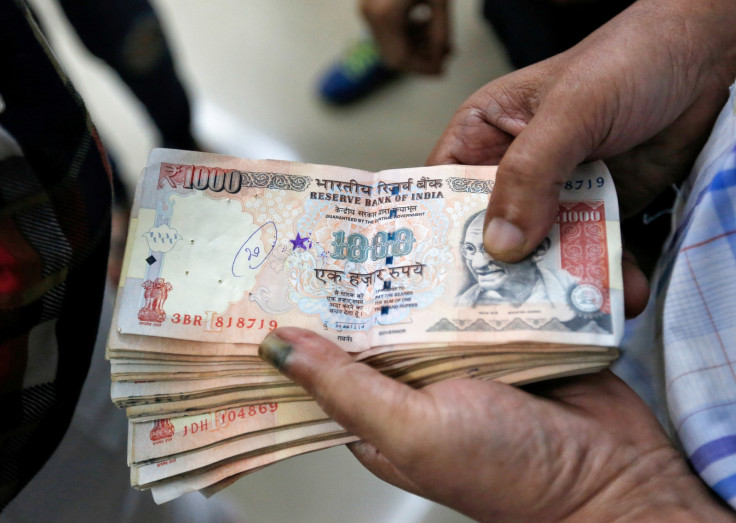Indian financial world returns to normalcy after PM Modi scraps 500 and 1,000 rupee notes overnight
Narendra Modi's surprise move aims to curb corruption and unaccounted money in the country.

Messages like "America counting votes, India counting notes" bombarded the Indian social media shortly after Prime Minister Narendra Modi dropped a late-evening bombshell by announcing the demonetisation the country's highest valued currency notes – Rs 500 and Rs 1,000, valued £6 and £12, respectively.
The surprise step, which is thought to be in the works for at least few months before the announcement, sent shockwaves across households and small businesses – which heavily rely on cash-based transactions. Stock markets also felt the tremors when they opened on Wednesday, 9 November, but quickly returned to normalcy. Benchmark share indices saw a sharp recovery in the latter half of the trading session.
Although Modi's move in stripping a currency unit of its status as legal tender is not an unprecedented scene in independent India, the sheer magnitude of the clampdown posed some uncertainty for the financial sector. Even the chiefs of top banks were in the dark until when the prime minister formally made the announcement on Tuesday (8 November).
The two banknotes together account for 86% of India's currency by value in circulation and nearly 12% of the country's GDP.
India has a thriving parallel economy which survives only of cash transactions and Modi's latest move is intended to press the reset button of that economy.
The announcement by the prime minister also aims to hammer hard on illegal money laundering, counterfeit notes and unearth the unaccounted funds, popularly known as black money.
The real estate sector – where the undeclared funds are often parked – is likely to take the biggest hit in the immediate future, according to analysts.
The Indian government's chief economic adviser Arvind Subramanian said: "I think this is an important step. What the government has taken in the fight against corruption, counterfeiting and black money. So I think over the medium term we will see the benefits probably."
One of the key reasons for curbing the 500 and 1,000 notes is because of the rapid rise in their circulation during the last five years – while the number of Rs 500 notes grew by 76%, the Rs 1,000 notes rose by 109% since 2011.
With immediate effect, the 500 and 1,000 denominations were made illegal tender from midnight as the government pledges to refill the citizens' pockets with a newly inducted Rs 2,000 note and a fresh Rs 500 – both are claimed to have been made hard-to-fake notes. The new notes would be made available from 11 November and initially they would be rationed.
"There are going to be some difficulties which they (people) will face but for their convenience, a number of steps have been taken by the government, there are facilities to withdraw money from ATM and exchange currency at banks, withdraw money from accounts," Finance Secretary Ashoka Lavasa said on Wednesday, 9 November hinting that the government is aware of swift meltdown.
Wishes and concerns have been pouring in from all corners for the Modi administration for taking such a bold initiative. While majority of the political leaders have welcomed the move, West Bengal's Chief Minister Mamata Banerjee, a sharp critic of the federal government, said: "Withdraw this draconian decision. This is a financial chaos and disaster let loose on the common people of India."
© Copyright IBTimes 2024. All rights reserved.






